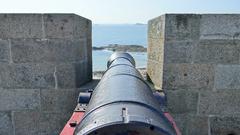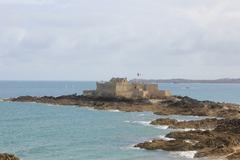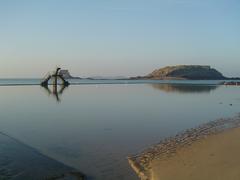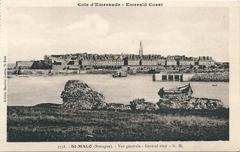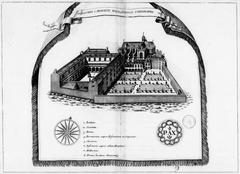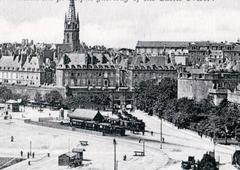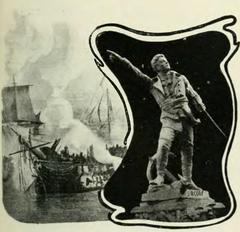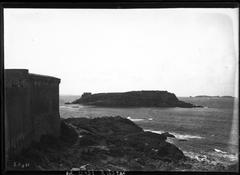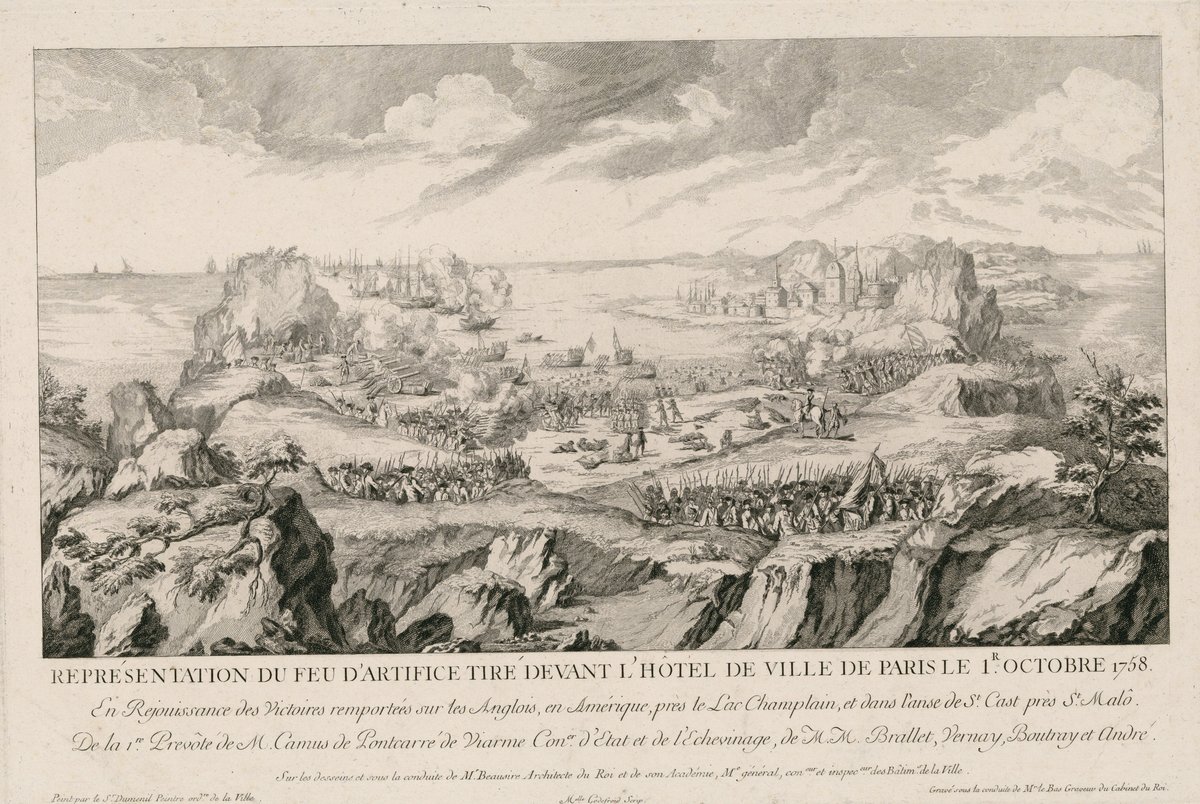
Raid on Saint-Malo: Visiting Hours, Tickets, and Historical Sites in Saint-Malo
Date: 14/06/2025
Introduction
Saint-Malo, perched on the northern coast of Brittany, France, is a city where maritime legacy, architectural grandeur, and wartime resilience converge. Famed for its formidable ramparts and pivotal role during World War II—especially the 1944 siege and liberation—Saint-Malo welcomes visitors with a rich blend of history, culture, and coastal beauty. Its strategic position on the English Channel has long made it a focal point for military operations, as evidenced by its impressive fortifications and the stories embedded in its stones.
This guide provides a comprehensive overview of Saint-Malo’s historical sites and practical visitor information, including opening hours, ticketing details, accessibility, and expert recommendations. Whether you’re drawn by the drama of wartime history, the charm of medieval streets, or vibrant festivals, Saint-Malo promises an immersive cultural experience. Dive in to discover how to explore the city’s past and present, savor its local cuisine, and make the most of your visit.
For in-depth historical context and planning resources, refer to the History of the Siege of Saint-Malo and the Saint-Malo Tourism Guide.
Table of Contents
- Historical Background and Significance of the Raids
- Visiting Saint-Malo: Key Sites and Practical Information
- Guided Tours, Self-Guided Exploration, and Special Events
- Visitor Experience: Photography, Accessibility, and Travel Tips
- Local Cuisine and Festivals
- Frequently Asked Questions (FAQ)
- Plan Your Visit and Stay Connected
- References and Further Reading
Historical Background and Significance of the Raids
Strategic Importance and Origins
Saint-Malo’s formidable location on the English Channel made it a critical stronghold throughout its history. During World War II, it became a heavily fortified German garrison, integrated into the Atlantic Wall. The Allies prioritized its liberation following the Normandy breakout in 1944, due to its strategic port and defensive fortifications (History of War).
The 1944 Siege and Liberation
The siege began in August 1944, with the U.S. VIII Corps tasked to liberate the city and its surroundings, including Dinard, Paramé, and Cézembre Island. Fierce fighting ensued, particularly at the Citadel and outlying forts. Despite devastating bombardments that damaged 80% of the city, the Allies secured Saint-Malo, marking a turning point in Brittany’s liberation (History of War; France Voyage).
Historical Legacy
The post-war era saw extensive reconstruction, restoring Saint-Malo’s ramparts and historic buildings. Today, the city stands as a symbol of resilience, with its preserved architecture and memorials offering a vivid connection to the past (France Voyage).
Visiting Saint-Malo: Key Sites and Practical Information
1. Saint-Malo Ramparts
Encircling the old town for nearly 1.7 kilometers, these granite walls date from the 12th century and were expanded by Vauban in the 18th century. The ramparts provide panoramic views of the sea, harbor, and islands.
- Hours: Open daily from 8:00 AM to sunset
- Tickets: Free entry
- Accessibility: Most sections are accessible, but some areas have uneven surfaces (Saint-Malo Tourism Office)
2. Saint-Malo Cathedral (Cathédrale Saint-Vincent)
A harmonious blend of Romanesque and Gothic styles, the cathedral was rebuilt after WWII and houses the tomb of explorer Jacques Cartier.
- Hours: Daily, 9:00 AM – 6:00 PM
- Tickets: Free; donations appreciated
- Accessibility: Wheelchair accessible with assistance
3. Château de Saint-Malo
This 15th-century fortress, built by the Dukes of Brittany, marks the entrance to the old town. Though the city museum has relocated, the château remains a striking architectural site.
- Hours: Exterior accessible year-round; interior by appointment
- Tickets: Free for exterior; fees for special exhibits
- Accessibility: Limited inside; exterior accessible
4. Fort National
Constructed in 1689 by Vauban, this fortress stands on a tidal island and protected Saint-Malo from naval threats.
- Hours: April–September, 10:00 AM–6:00 PM (tide-dependent)
- Tickets: ~€5 adults, €3 children under 16
- Accessibility: Not wheelchair accessible due to uneven terrain
- Tip: Always check tide schedules before visiting
5. Cité d’Aleth and Tour Solidor
Cité d’Aleth, the original Malouin settlement, features Roman remains, WWII bunkers, and the 14th-century Tour Solidor, now a museum dedicated to long-distance sailing.
- Hours: Museum, 10:00 AM–6:00 PM daily
- Tickets: ~€6 adults; reduced rates for children
- Accessibility: Partial wheelchair access
6. Mémorial 39/45 (World War II Memorial)
Located in the Cité d’Aleth, this museum occupies German-built bunkers and recounts the 1944 siege and occupation.
- Hours: Main museum open year-round, 10:00 AM–5:30 PM; underground galleries open June–September
- Tickets: ~€7 adults; €4 children
- Accessibility: Main museum accessible; underground galleries limited
7. Musée d’Histoire de la Ville de Saint-Malo
Showcasing Saint-Malo’s seafaring and privateer history, this museum features ship models, maritime artifacts, and historical documents.
- Hours: Tuesday–Sunday, 10:00 AM–6:00 PM
- Tickets: ~€5 adults; free for children under 12
- Accessibility: Fully accessible
8. Jacques Cartier Museum (Manoir de Limoëlou)
Exploring the life of Jacques Cartier, this museum displays period furnishings, maps, and artifacts.
- Hours: Wednesday–Sunday, 2:00 PM–6:00 PM
- Tickets: ~€4 adults; free for children under 12
- Accessibility: Limited; contact ahead
9. Demeure du Corsaire
An 18th-century privateer’s mansion, this site offers guided tours of period rooms and secret passages.
- Hours: Typically May–September, 10:00 AM–6:00 PM
- Tickets: ~€6 adults; discounts for children
- Accessibility: Not fully accessible
10. House Quebec (Maison du Québec)
Celebrates Franco-Canadian ties with exhibits and cultural events.
- Hours: Vary; open during events
- Tickets: Free
- Accessibility: Accessible
11. Malouinières
Elegant 17th- and 18th-century country houses built by shipowners, open for tours by appointment.
- Hours/Tickets: Vary by site
- Accessibility: Varies
12. Sculptured Rocks of Rothéneuf
Granite carvings created by Abbot Fouré in the late 19th century.
- Hours: Year-round; guided tours in summer
- Tickets: ~€5 adults
- Accessibility: Uneven terrain
Guided Tours, Self-Guided Exploration, and Special Events
Guided and Themed Tours
- Walking Tours: Explore the Intra-Muros, ramparts, and major landmarks with local experts. Many tours focus on WWII, privateering, or architectural history (Simply France).
- Fort National & Island Tours: Learn about the 1758 British raid, WWII occupation, and Vauban’s defenses with guided visits (Petit Futé).
- Boat Excursions: Sail around Saint-Malo’s bay for panoramic views and commentary on military history (Journey to France).
- Self-Guided Trails: Use maps from the Tourist Office for historic walks and interpretive signage.
Special Events and Festivals
- Raid des Corsaires: Annual regatta with historical reenactments and parades, held in September.
- Fête des Remparts: Biennial medieval festival with performances and markets.
- Other Events: Route du Rock music festival and Étonnants Voyageurs literary festival.
Visitor Experience: Photography, Accessibility, and Travel Tips
Photography and Heritage
Capture sunrise and sunset over the ramparts, Fort National at low tide, and the striking facades of Intra-Muros. Please respect memorials and marked heritage sites.
Accessibility
While many museums and key sites offer good accessibility, some areas—such as ramparts, island forts, and older structures—may present challenges due to uneven surfaces and steep steps. Contact sites in advance for specific needs (Petit Futé).
Travel Tips
- Best Time to Visit: April to October; early autumn offers fewer crowds.
- Tide Awareness: Always check tide schedules for Fort National and tidal islands.
- Getting Around: The city center is pedestrian-friendly. Parking is available outside the walls.
- Local Etiquette: Greet with “Bonjour”; savor local cuisine at a leisurely pace.
Local Cuisine and Festivals
Must-Try Dishes
- La Cotriade: Traditional Breton fish stew.
- Seafood: Oysters, mussels, and scallops are regional specialties.
- Breton Galettes: Savory buckwheat crepes.
- Kouign-Amann: Buttery, caramelized pastry.
- Cider: Local Breton cider pairs perfectly with meals.
Recommended Restaurants
Dine in Intra-Muros for meals highlighting fresh seafood and regional recipes. Early reservations are advised during festivals.
Frequently Asked Questions (FAQ)
Q: What are the main visiting hours for Saint-Malo’s historical sites?
A: Most sites open between 9:00 AM and 6:00 PM, with seasonal variations.
Q: Are the ramparts free to visit?
A: Yes, walking the ramparts is free.
Q: Do I need to book guided tours in advance?
A: Strongly recommended, especially during summer and festivals.
Q: Can I access Fort National at any time?
A: No, only at low tide. Always check tide charts.
Q: Is Saint-Malo accessible for wheelchair users?
A: Many museums and public spaces are accessible, but ramparts and some historic sites have limitations.
Q: Where can I find up-to-date information on events?
A: Visit the Saint-Malo Tourism Office or download the Audiala app.
Plan Your Visit and Stay Connected
Saint-Malo’s historical richness, culinary delights, and lively cultural calendar make it a premier destination in Brittany. For the latest updates on opening hours, tickets, and special events, use resources like the Audiala app and the Saint-Malo Tourism Office. Enhance your experience with interactive maps, audio guides, and real-time notifications.
References and Further Reading
- History of the Siege of Saint-Malo, 1944, History of War
- Saint-Malo Tourism Guide, France Voyage
- Cityzeum Saint-Malo Guide
- Simply France Saint-Malo Tour Guide
- Go Brittany Saint-Malo History
- The World Pursuit Saint-Malo Attractions
- Official Saint-Malo Tourism Site
- Petit Futé Saint-Malo Attractions
- Journey to France Saint-Malo Guide
- ToursByLocals Saint-Malo Tours

